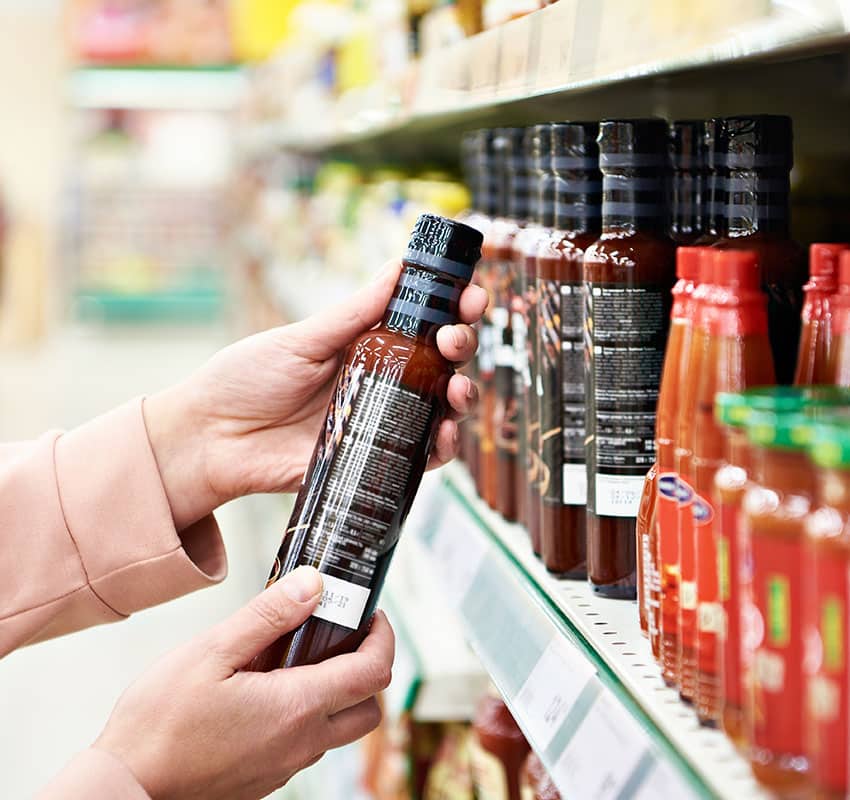Programmatic Advertising for Food Brands
Many food brands are confused about their advertising strategy. They are unable to execute their campaign strategy because these food brands lack knowledge about modern advertising practices. There are many advertising techniques available in the digital world. However, one of the most advanced advertising techniques for food brands is Programmatic Advertising. Don’t worry if you have no clue about Programmatic Advertising, we will explain this advertising strategy and how food brands may utilize this technique to achieve their campaign goals.
Despite being one of the most important tools in your company’s arsenal, programmatic advertising is one of the least understood marketing strategies. Ad placement decisions are made using hyper-specific data such as the target consumer’s age, location, career, and particular customer interests. This enables businesses to launch hyper-targeted, highly effective ad campaigns with the highest ROI. This enables businesses to target customers across the entire internet.
Food brands use programmatic advertising to buy and sell digital advertising space online. Programmatic advertising works through machine learning and artificial intelligence and it removed the hassle of buying and selling ads manually. It is an efficient process because food brands streamlined their process of buying and selling online digital ads. Programmatic advertising uses customer behavior to show relevant ads to the audience. This way food brands increased their revenue while spending their advertising budget on the proper technique. Gourmet Ads helps food advertising agency in many areas of advertising. Gourmet Ads is the worlds leading provider of food Advertising Solutions. No matter it is recipe targeting, ingredient targeting, or cuisine targeting, we have experience of helping food brands in that domain. Gourmet Ads also specializes in URL targeting and domain targeting which gives an edge to food managers to target a specific list of domains or URLs around a topic. For example, if you are a brand manager and you want to target specific URLs in your advertising campaign then you can provide us a list of URLs that you want to be targeted. The recipe index feature of Gourmet Ads has millions of recipes and we are highly expert in hyper-focused targeting.
How Food Brands May Use Programmatic Advertising
It is critical for food brands to make a proper marketing strategy. Food brands should start with a wide audience in mind and then continuously revise the campaign as new information becomes available. Different food advertising tricks are used by food brands to enhance sales and brand awareness. The best practice for implementing a programmatic marketing strategy is continuous iterative optimization, which is also the solution to continuously compounding better economics in any marketing campaign. Although your rival may outspend you, you should never be “out-tested.” Every food brand should consider implementing well-executed programmatic marketing campaigns, as it will be a highly effective competitive differentiator. To do this, look at the best practices, themes, and processes and apply them to your food business.
Programmatic Advertising help food brands in the following ways:
- Targeting the Right Audience:
Every food brand wants the right audience to hear their advertisement. Granular audience targeting is possible with programmatic, which divides audiences into groups based on factors like geography, demographics, behavior, and location. The most important thing is to collect and analyze reliable data on potential customers. By selecting the appropriate targeting options, advertising dollars can be saved and less money can be spent on users who aren’t genuinely interested in your food business. Food brands can spread brand awareness and connect with the right consumers thanks to programmatic advertising, which also offers the possibility of future user engagement and communication.
- Suitable for large and small food businesses
Programmatic advertising is suitable for both large and small food businesses because it is completely scalable in terms of the amount spent on ad campaigns. For example, Google Ads allows for average daily budgets for campaigns and will decide when to use the budget most effectively on a day-to-day basis based on factors that affect the campaign’s ROI—for example, advertising more for a restaurant display campaign in the lead-up to the weekend might be more advantageous. Because of this, budgets can not only be used more efficiently, but programmatic advertising also allows for extremely flexible scalability—food companies can easily increase or decrease their budget as necessary. It does not matter whether you are an owner of a small food company or a large food company, you can use programmatic advertising to spotlight your food business.
3. Access Data in Real Time:
Food brands can access this data in real time because programmatic advertising is fundamentally based on the application and analysis of data in real time. As a result, they are able to make decisions quickly, adjust campaigns as needed, and assess them as they are launched. Programmatic advertising stands out as a practical solution for food advertisers because of this kind of real-time management using a data-driven decision-making process. If you are a marketing manager in a food company then you can analyze your results in real time and you don’t have to wait. Therefore, programmatic advertising saves time while providing data in real time.
4. Create Brand Awareness:
Access to a vast network of publishers on many different platforms is made possible by programmatic. In order to interact with customers at the appropriate time and place today, food brands must take into account every digital touchpoint of the audience. The simultaneous user reach across multiple platforms, including desktop, mobile, tablet, smart TV, and others, is made possible by programmatic. This increases user awareness by utilizing relevant channels and effective ad formats. Therefore, food companies can use multiple formats in programmatic advertising to create brand awareness.
5. More Transparent Advertising Technology:
The traditional advertising environment involved many time-consuming steps in the media-buying process, such as buying ad space through agencies, which, while producing respectable results, cost the marketers valuable time. Programmatic advertising, on the other hand, is largely automated and assists brands and marketers in placing their ads in all pertinent locations without the need for manual human intervention. In this type of advertising, AI-based algorithms handle labor-intensive tasks for marketers, greatly reducing their workload and demonstrating the method’s superior accuracy and efficacy. Additionally, programmatic advertising offers food brand advertisers unlimited ad inventory across websites.
A new, more effective method of purchasing, deploying, and optimizing advertisements is programmatic advertising. Programmatic ad-buying has quickly taken over the majority of the online advertising market and doesn’t appear to be slowing down. Food brands should use programmatic technology to outpace their competitors and increase their sales. Programmatic advertising’s relevance has multiplied as brands and marketers adopt a more data-driven strategy for their campaigns, and businesses of all sizes are lining up to take advantage of its advantages.
Gourmet Ads have been operating countless campaigns using programmatic advertising since 2012. We are a market leader in programmatic advertising. Gourmet Ads helps food brands to achieve their marketing goals. If you own a food company and you have not experienced programmatic advertising yet then you are missing a big opportunity to grow your business.











